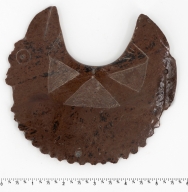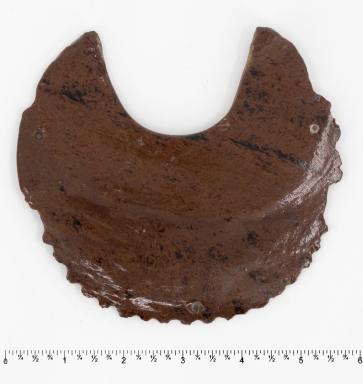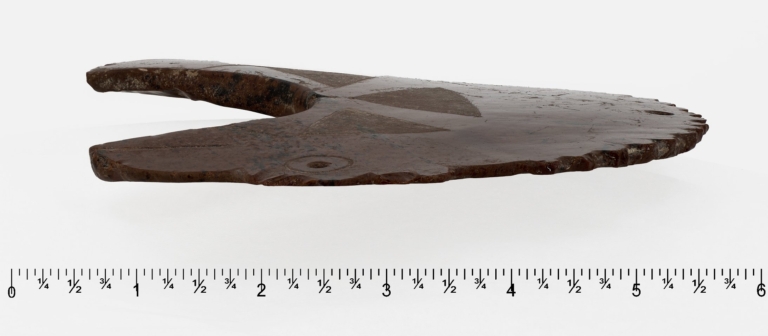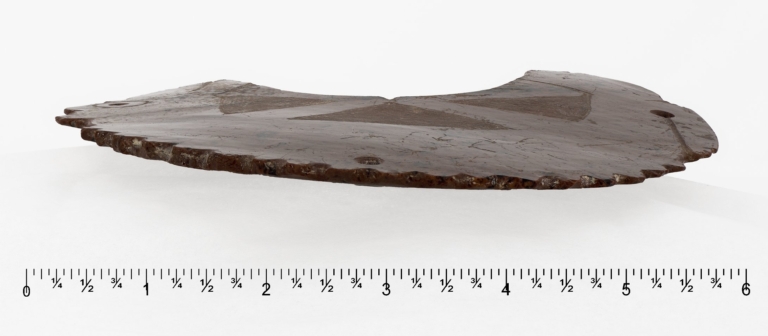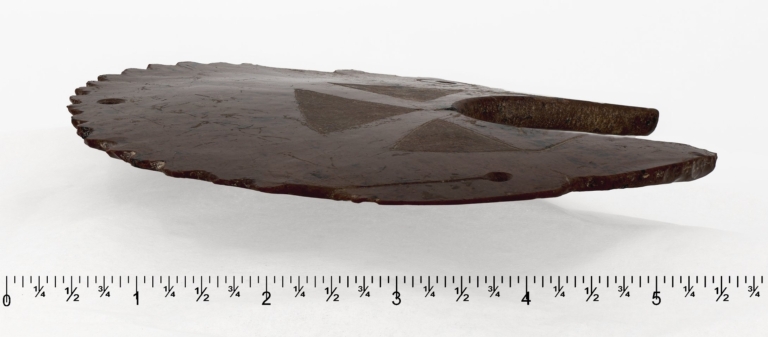Who What Where WhenWHERE |
REFINE
Browse All : Stone carving--Mexico--Colima (State) and Art--Mexico--Colima (State) of MawM0195
1-6 of 6
Title
Mahogany obsidian pectoral.
Description
This crescent-shaped pectoral has two pointed ends, which can be interpreted as a two-headed bird, a caiman, or an iguana. The pectoral represents duality and transformation.
Subject
[Stone carving--Mexico--Colima (State), Art--Mexico--Colima (State), Indigenous peoples--Antiquities]
Date
between 250 B.C. and 250 A.D.
Title
Mahogany obsidian pectoral.
Description
This crescent-shaped pectoral has two pointed ends, which can be interpreted as a two-headed bird, a caiman, or an iguana. The pectoral represents duality and transformation.
Subject
[Stone carving--Mexico--Colima (State), Art--Mexico--Colima (State), Indigenous peoples--Antiquities]
Date
between 250 B.C. and 250 A.D.
Title
Mahogany obsidian pectoral.
Description
This crescent-shaped pectoral has two pointed ends, which can be interpreted as a two-headed bird, a caiman, or an iguana. The pectoral represents duality and transformation.
Subject
[Stone carving--Mexico--Colima (State), Art--Mexico--Colima (State), Indigenous peoples--Antiquities]
Date
between 250 B.C. and 250 A.D.
Title
Mahogany obsidian pectoral.
Description
This crescent-shaped pectoral has two pointed ends, which can be interpreted as a two-headed bird, a caiman, or an iguana. The pectoral represents duality and transformation.
Subject
[Stone carving--Mexico--Colima (State), Art--Mexico--Colima (State), Indigenous peoples--Antiquities]
Date
between 250 B.C. and 250 A.D.
Title
Mahogany obsidian pectoral.
Description
This crescent-shaped pectoral has two pointed ends, which can be interpreted as a two-headed bird, a caiman, or an iguana. The pectoral represents duality and transformation.
Subject
[Stone carving--Mexico--Colima (State), Art--Mexico--Colima (State), Indigenous peoples--Antiquities]
Date
between 250 B.C. and 250 A.D.
Title
Mahogany obsidian pectoral.
Description
This crescent-shaped pectoral has two pointed ends, which can be interpreted as a two-headed bird, a caiman, or an iguana. The pectoral represents duality and transformation.
Subject
[Stone carving--Mexico--Colima (State), Art--Mexico--Colima (State), Indigenous peoples--Antiquities]
Date
between 250 B.C. and 250 A.D.
1-6 of 6
|
